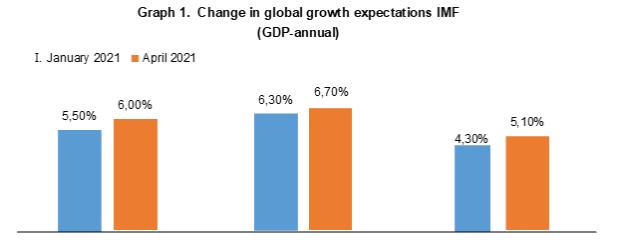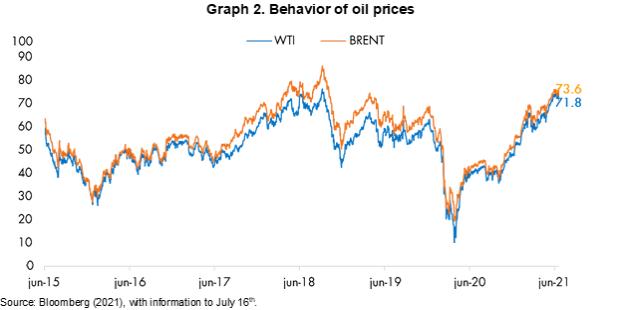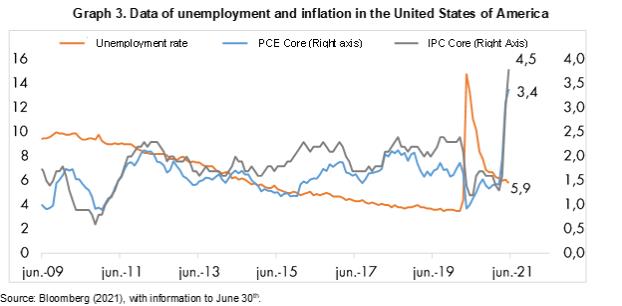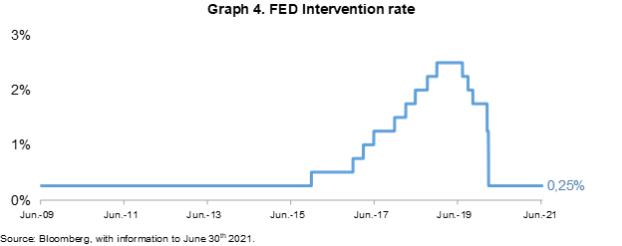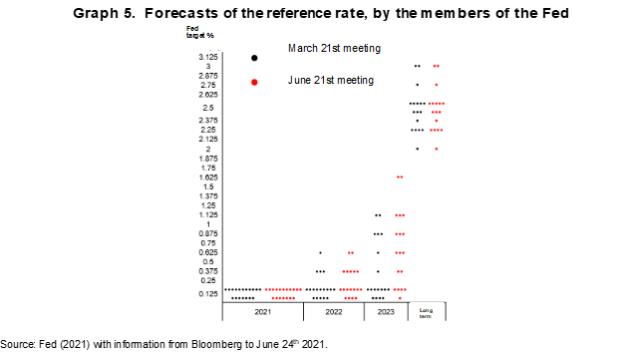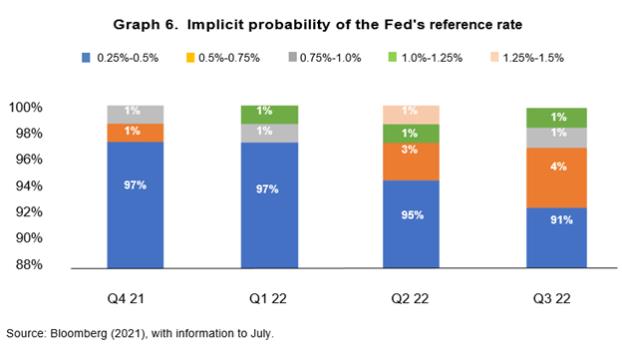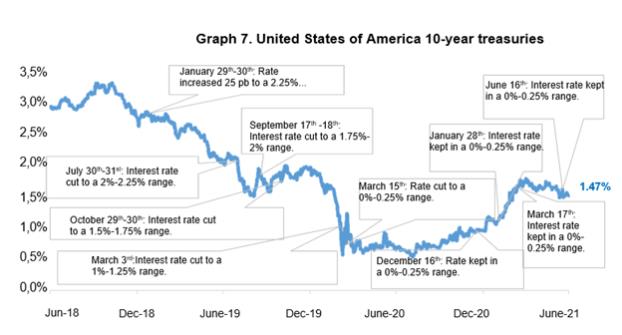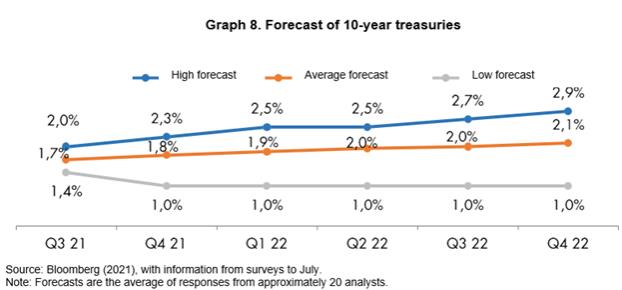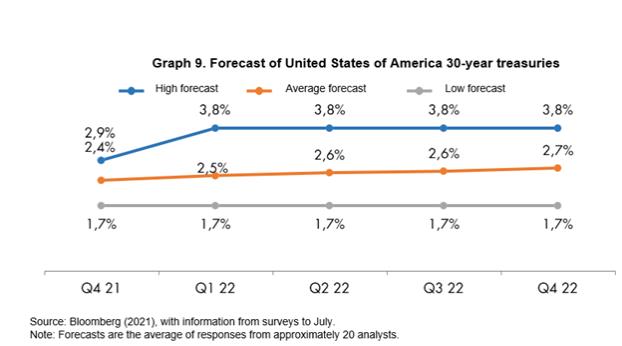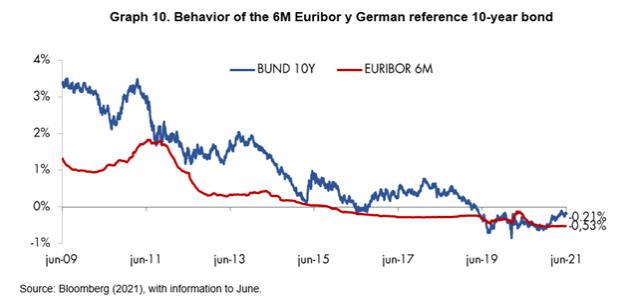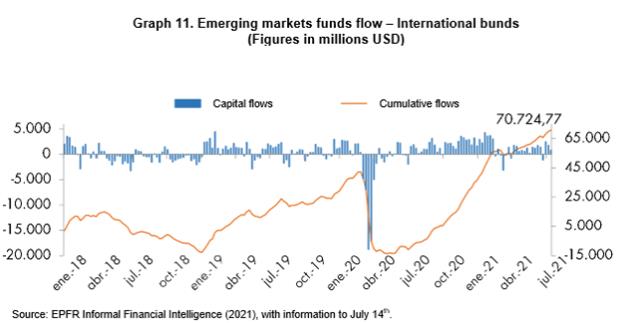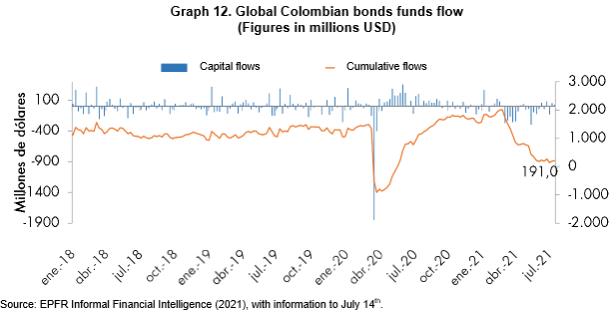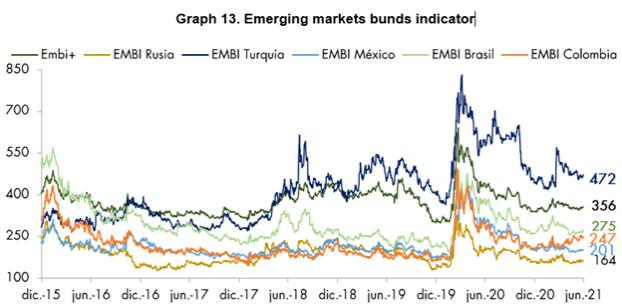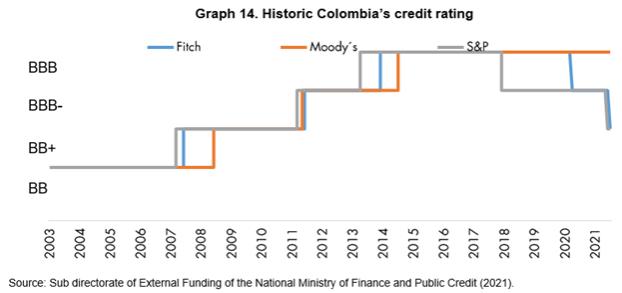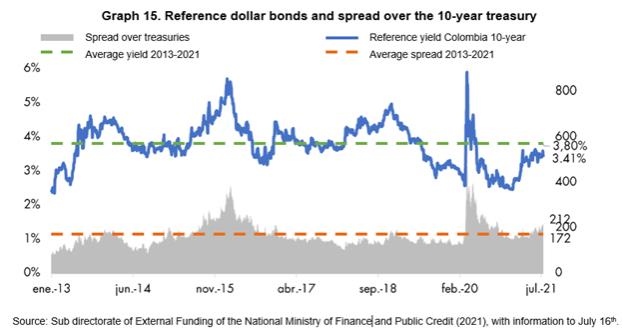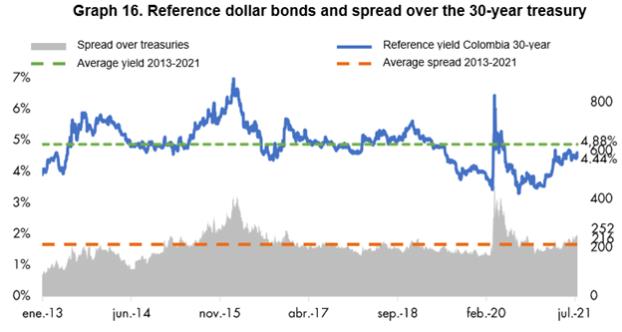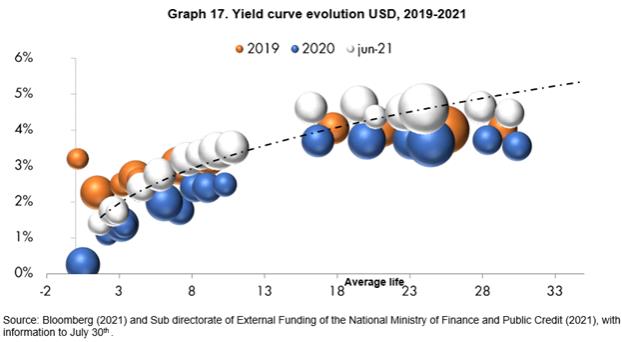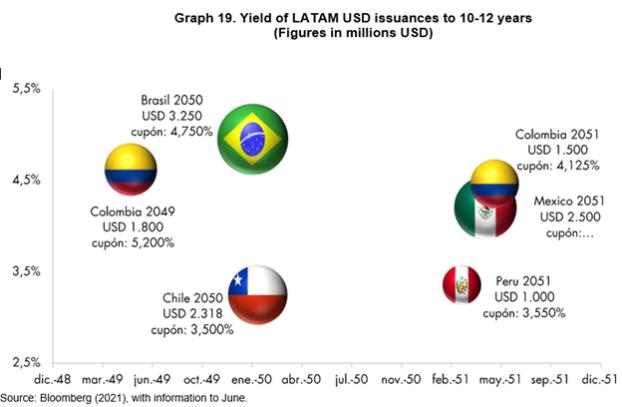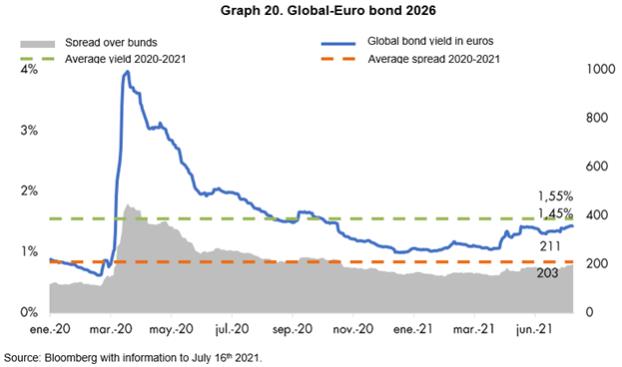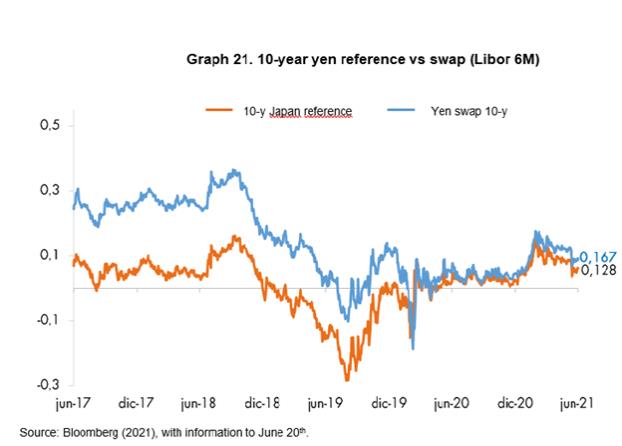1. INTRODUCTION
The present document submits for the consideration of the National Council of Social and Economic Policy (CONPES), the favorable opinion for the nation to contract transactions related to external public credit for the prefinancing and/or financing of budget appropriations for the terms 2021 and 2022 up to the amount of U.S. $ 5,500 million, or its equivalent in other currencies. The aforementioned, pursuant paragraph 2, article 41, Law 80 of 19933 and articles 2.2.1.3.1, 2.2.1.3.2 and 2.2.1.6, Decree 1068 of 20154. In this way, having the required authorizations to access to different sources of funding, the Nation will be entitled to: (i) the prefinancing and/or financing of the necessities of the terms 2021 and 2022; (ii) to obtain timely access to international capital markets; (iii) to obtain funding in favorable terms and conditions; (iv) to diversify the investor base; (v) to achieve the strategic objective of the building of liquid and efficient curves. The present document is divided in principal sections, including this introduction. The second section presents the background, specifically, background related to issuances made by the Nation. Third section justify the need of prefinancing and/or financing for the 2021 and 2022 terms. Forth section presents the market context, particularly the behavior of the U.S., Eurozone, Japanese and emerging markets economies as well as the performance of Colombian economy. Fifth section presents the objectives to be achieved with the document and Sixth section presents recommendations to the CONPES.
| 3 | Through which the General Statute for Public Administration Purchases was enacted. |
Paragraph 2 of article 41 sets forth:
Public Credit Transactions. Notwithstanding the provisions of special laws, for the purposes of this law, it will be considered as “public credit transactions” to those whose purpose is to provide to an entity with resources with a term for its payment, among which are the contracting of loans, the issuance, subscription and placement of bonds and securities, supplier credits and the granting of guarantees for credit obligations in charge of governmental entities.
| (...) | For the management and execution of all external credit transactions and transactions similar to these of Governmental entities and for internal public credit transactions and transactions assimilated to these by part of the Nation and its decentralized entities, as well as for the granting of the guarantee of Nation, the authorization of the Ministry of Finance and Public Credit will be required, with prior favorable concepts from CONPES and the National Planning Department. |
| (...) | In any case, the external public credit transactions of the Nation and those guaranteed by it, with term of more than one year, required a prior favorable concept from the Inter-Parliamentary Commission of Public Credit. |
| (...) | The transactions referred to in this article and that are held to be executed abroad are submitted to the jurisdiction agreed in the contracts". |
| 4 | Through which the Single Regulatory Decree for Finance and Public Credit Sector was enacted and that revoked Decrees 1497 of 2002 and 3160 of 2011. |
Article 2.2.1.3.1. sets forth:
Public debt Securities. Public debt securities include bonds and other debt securities and with a term for its redemption, issued by governmental entities. Public debt securities do not include securities issued by credit institutions, insurance companies and other financial entities of public nature character, in the ordinary course of its business. The placement of public debt securities will be subject to the general financial terms and conditions set forth by the Board of Directors of Banco de la República.
Article 2.2.1.3.2. establishes:
National Public Debt Securities. The issuance and placement of public debt securities in the name of the Nation will require authorization, issued by resolution of the Ministry of Finance and Public Credit, which may be granted once the following have been previously obtained: a) Favorable opinion of the National Council of Social and Economic Policy, CONPES; and, b) Concept of the Public Credit Commission in the case of external public debt securities with a term of more than one year.
Article 2.2.1 .6. sets forth:
Issuance of authorizations and concepts. To issue the corresponding concepts and authorizations, the CONPES, the National Planning Department and the Ministry of Finance and Public Credit will take into account, among others, the adequacy of the respective transactions to the Government's policy in matters of public credit and its conformity with the Macroeconomic Program and Financial Plan approved by the CONPES, and the Superior Council of Tax Policy, CONFIS. The concepts of CONPES and the National Planning Department Board, when there is room for them, will be issued over the technical, economic and social justification of the project, the execution capacity and the financial situation of the respective entity, its financing plan by sources of resources and its schedule of annual expenses.
1


